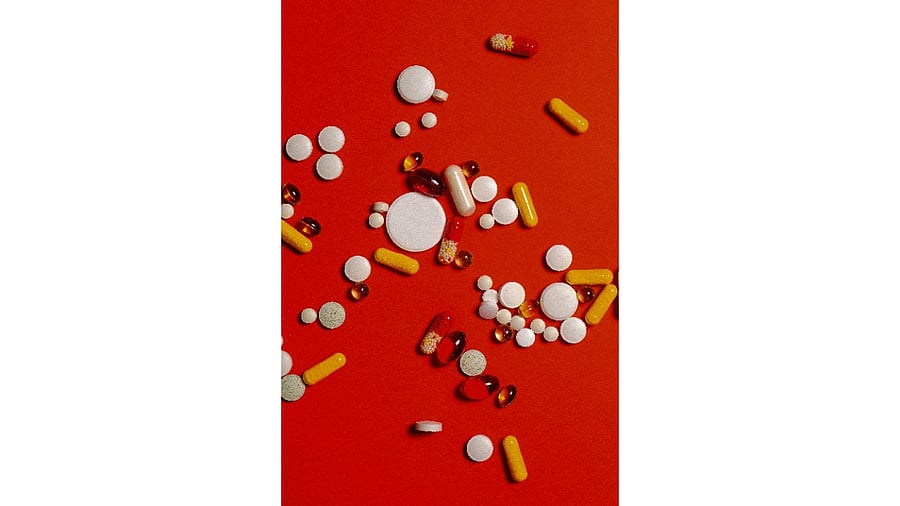
India has the highest rate of antibiotic consumption in the world, accounting for an astonishing 23% of the global retail sales volume of antibiotics.
Image courtesy Pexels
By Dr Anirban Mahapatra
Do you know what’s in the water around you? How about the food that you eat? A discovery at the Patancheru Industrial Area near Hyderabad in 2009 shocked the world. The wastewater from the local treatment plant, responsible for processing effluents from dozens of drug manufacturers, contained extraordinarily high levels of antibiotics and other drugs… The waters of Patancheru had turned into a cocktail of antibiotics, and people were consuming them without being aware of their presence. In one set of incidents in Patancheru, pharmaceutical companies were reported to have dumped around fifty kilograms of the antibiotic ciprofloxacin into rivers daily.
This is a serious problem. If such contamination had been an isolated incident, it would be concerning enough. However, similar contamination has been reported from the Yamuna River, a crucial water source for millions in one of India’s most densely populated regions. Polluting the environment with antibiotics rapidly accelerates the spread of resistance to life-saving drugs in disease-causing bacteria. These superbugs then transfer some drug-defeating genes to other bacteria causing a pandemic of superbugs. It’s a vicious cycle. But water is not our only worry. Recent reports of the use of antibiotics in food have also caused a stir. It’s a dirty secret that 70% of antibiotics used worldwide are not for human treatment but for food production. For example, antibiotics that should only be used to treat people have been used to plump up chickens for the market.
In 2018, a comprehensive report by the Bureau of Investigative Journalism made the shocking discovery that at least five animal pharmaceutical companies in India were openly promoting colistin as a growth enhancer for livestock. Colistin is an antibiotic with many side effects that doctors prescribe when patients are hospitalised with superbugs that can’t be treated with any other drug. Reporters were able to easily purchase 200 grams of colistin product in Bengaluru without a prescription. At the time, companies selling colistin were not breaking any law. Since then, the Indian government has banned the use of colistin on farms, a move deserving of praise for its decisiveness. However, more needs to be done. In 2016, all 193 United Nations member states acknowledged that the use of antibiotics in agriculture contributes to the rise of superbugs.
Knowledge alone is not enough. It must lead to action. India ranks among the top five countries for antibiotic use in livestock, contributing to the spread of antibiotic resistance through the food chain. We must ban all antibiotics essential for human health from agricultural use. In addition, until laws to curb antibiotic resistance are both implemented and enforced effectively, there must be greater transparency in labelling meat and dairy products. Let consumers know if the products they purchase come from animals raised on antibiotics. Inaction is not an option. India has one of the highest levels of antibiotic resistance in the world, with resistance rates to several crucial antibiotics greater than 70%.
India has the highest rate of antibiotic consumption in the world, accounting for an astonishing 23% of the global retail sales volume of antibiotics. Unfortunately, the pipeline of new drugs is dry. The last truly new class of antibiotics came to market over twenty years ago! At the same time, more people are dying from superbugs each year. Each year, untreatable superbugs kill around 3,00,000 in India including 60,000 newborns. In addition, they are a contributing factor in approximately a million deaths annually in India. The scale of the devastation of the hidden pandemic of drug-resistant superbugs is worrisome. Unfortunately, the numbers will continue to rise if we fail to act. Superbug infections will cause 10 million deaths worldwide by 2050 — more annual deaths than from Covid-19 at its peak or cancer right now. But all is not lost. There are many doctors, scientists, policymakers, and economists who are fighting to prevent that doomsday scenario.
Doctors and scientists can’t tackle this problem alone. We can beat superbugs if we rise up to the challenge together. It is clear that the discussion of antibiotic-resistant superbugs needs to move beyond microbiology conferences and conversations with doctors in white coats. It needs to move from the corridors of hospitals
into the chat groups of ordinary citizens and into the halls of power.
(The author recently published When the Drugs Don’t Work: The Hidden Pandemic That Could End Modern Medicine with Juggernaut.)